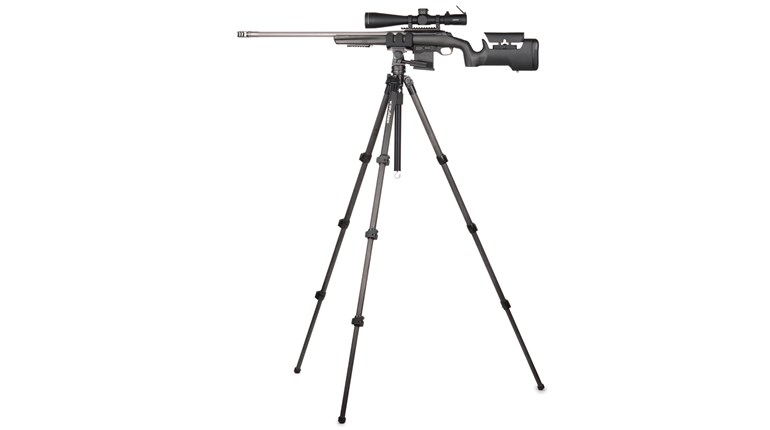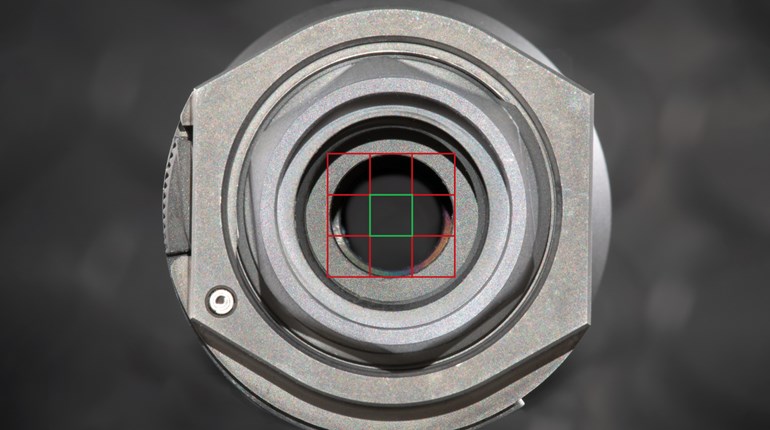
To ensure success in a home-defense situation, have your rifle sighted in, magazines loaded, gear together and ready to go in an accessible (but safe) location.
“Have your musket clean as a whistle, hatchet scoured, 60 rounds powder and ball and be ready to march at a minute’s warning.” That sage advice from MAJ Robert Rogers is found on page one of the “U.S. Army Ranger Handbook” I was issued in 1988. Because I had already learned Rogers’ “Rules for Ranging” from an older copy of the manual as a youngster, my perceptions of readiness were set long before I began my own Ranger journey.
MAJ Rogers wrote his 28 rules for the Ranger companies he raised and led during the French and Indian War. Although his later Revolutionary War service against the United States, as well as ongoing personal problems, eventually tainted his status both here and abroad, the tactics and guidelines Rogers set to parchment during the 1750s are still studied by Special Operations troops today. While I routinely fail rule number one, “Don’t forget nothing [sic],” the aforementioned second rule has proven attainable in both my professional and personal lives.
With the exception of an 18-month “schoolhouse” stint teaching mountain warfare, my entire Army career was spent in rapid-deployment units. The majority of that time had me on a 1-hour string. By the time a middle-of-the-night notification reached me, I had about 40 minutes left to jump into my clothes like a cartoon character, race 35 miles to my base, load my guns and gear on vehicles and be seated in a briefing room. Obviously, such time constraints do not allow for last-minute preparations. Magazine loading, zero checks and verification that lights, lasers and optics are all functioning correctly must be completed ahead of time so that all equipment is constantly ready. Today’s challenges present ready-minded citizens with a corollary need for their own firearms and equipment.
When the subject of home defense comes up, gun owners almost always list handguns or shotguns as their arms of choice. Rifles are typically relegated to backseat status. I agree that compact, low-flash/low-muzzle-blast firearms provide several distinct advantages indoors that make them good first-grab solutions. Where I diverge from many of my gunwriting peers is the contention that because rifles are best suited for longer distances, they are unlikely to be used in defensive scenarios. Ideally, we do not want to leave the safety of our “castles,” where most of our physical and legal protections are found and where compact firearms are appropriate. But, the events of 2020 should disabuse anyone of the notion that simply hunkering down while armed behind a locked door is always the best solution.
Here is where Rogers’ rule number two is as applicable today as it was 241 years ago. Quite simply, you need to be ready to go at a moment’s notice. That means whatever firearm you are going to grab to meet the wolf outdoors has to also be ready. For most of us, that will be a centerfire rifle or carbine. But even if you prefer a slug gun that shoots 3-inch groups at 100 yards or a long-barreled revolver with which you can ring distant gongs, you and it need to be ready to work together without hesitation. The sights must be zeroed for your primary load and you should know how to compensate for secondary loads, such as subsonic or long-range precision rounds.
The rifle needs to be fully functional and ready to shoot without preparation. It should be clean and lubricated and any ancillary devices you rely on—like lights, electro-optics and laser-aiming devices—must also be fully operational. You should be capable of making accurate shots at whatever distances you feel comfortable. Whether you manage your elevation and windage “dope” through a cheat card taped to your rifle, a ballistic app on your phone or good old-fashioned rote memorization, the time to sort that out is now, not when you shoulder the rifle in earnest for the first time.
Remember to also prep your supporting gear and keep it near your main defensive gun. If your family protector is magazine-fed, load primary and spare mags now. If they have been loaded for longer than you can remember, rotate them now. Have at least a minimal cleaning kit handy, even if it holds nothing more than a pull cord, chamber swab and small bottle of cleaner/lubricant. This is also a good time to replenish any critical spare parts or batteries raided from your pistol grip, trapdoor buttstock or general-purpose pouch over the past few range sessions. If you use a vest, pack or belt for supporting equipment, know where everything is and ensure it fits well without restricting movement. Finally, operating your rifle—including dealing with malfunctions—should be second-nature. Practice now until you can safely and efficiently work every piece of your equipment by feel alone.
History is a dual-natured animal. More often than not, paying attention to it will stave off the mistakes of the past. Conversely, ignoring it is a great way to have to learn hard lessons all over again. When MAJ Rogers took his quill in hand on an island in the Hudson River two-and-a-half centuries ago, he recorded the simple ideas of a battle-tested frontiersman in usable form. It turns out that in the case of Ranging rule number two, we can also apply history in the form of a guide for the modern frontier.
MAJ Rogers wrote his 28 rules for the Ranger companies he raised and led during the French and Indian War. Although his later Revolutionary War service against the United States, as well as ongoing personal problems, eventually tainted his status both here and abroad, the tactics and guidelines Rogers set to parchment during the 1750s are still studied by Special Operations troops today. While I routinely fail rule number one, “Don’t forget nothing [sic],” the aforementioned second rule has proven attainable in both my professional and personal lives.
With the exception of an 18-month “schoolhouse” stint teaching mountain warfare, my entire Army career was spent in rapid-deployment units. The majority of that time had me on a 1-hour string. By the time a middle-of-the-night notification reached me, I had about 40 minutes left to jump into my clothes like a cartoon character, race 35 miles to my base, load my guns and gear on vehicles and be seated in a briefing room. Obviously, such time constraints do not allow for last-minute preparations. Magazine loading, zero checks and verification that lights, lasers and optics are all functioning correctly must be completed ahead of time so that all equipment is constantly ready. Today’s challenges present ready-minded citizens with a corollary need for their own firearms and equipment.
When the subject of home defense comes up, gun owners almost always list handguns or shotguns as their arms of choice. Rifles are typically relegated to backseat status. I agree that compact, low-flash/low-muzzle-blast firearms provide several distinct advantages indoors that make them good first-grab solutions. Where I diverge from many of my gunwriting peers is the contention that because rifles are best suited for longer distances, they are unlikely to be used in defensive scenarios. Ideally, we do not want to leave the safety of our “castles,” where most of our physical and legal protections are found and where compact firearms are appropriate. But, the events of 2020 should disabuse anyone of the notion that simply hunkering down while armed behind a locked door is always the best solution.
Here is where Rogers’ rule number two is as applicable today as it was 241 years ago. Quite simply, you need to be ready to go at a moment’s notice. That means whatever firearm you are going to grab to meet the wolf outdoors has to also be ready. For most of us, that will be a centerfire rifle or carbine. But even if you prefer a slug gun that shoots 3-inch groups at 100 yards or a long-barreled revolver with which you can ring distant gongs, you and it need to be ready to work together without hesitation. The sights must be zeroed for your primary load and you should know how to compensate for secondary loads, such as subsonic or long-range precision rounds.
The rifle needs to be fully functional and ready to shoot without preparation. It should be clean and lubricated and any ancillary devices you rely on—like lights, electro-optics and laser-aiming devices—must also be fully operational. You should be capable of making accurate shots at whatever distances you feel comfortable. Whether you manage your elevation and windage “dope” through a cheat card taped to your rifle, a ballistic app on your phone or good old-fashioned rote memorization, the time to sort that out is now, not when you shoulder the rifle in earnest for the first time.
Remember to also prep your supporting gear and keep it near your main defensive gun. If your family protector is magazine-fed, load primary and spare mags now. If they have been loaded for longer than you can remember, rotate them now. Have at least a minimal cleaning kit handy, even if it holds nothing more than a pull cord, chamber swab and small bottle of cleaner/lubricant. This is also a good time to replenish any critical spare parts or batteries raided from your pistol grip, trapdoor buttstock or general-purpose pouch over the past few range sessions. If you use a vest, pack or belt for supporting equipment, know where everything is and ensure it fits well without restricting movement. Finally, operating your rifle—including dealing with malfunctions—should be second-nature. Practice now until you can safely and efficiently work every piece of your equipment by feel alone.
History is a dual-natured animal. More often than not, paying attention to it will stave off the mistakes of the past. Conversely, ignoring it is a great way to have to learn hard lessons all over again. When MAJ Rogers took his quill in hand on an island in the Hudson River two-and-a-half centuries ago, he recorded the simple ideas of a battle-tested frontiersman in usable form. It turns out that in the case of Ranging rule number two, we can also apply history in the form of a guide for the modern frontier.



































